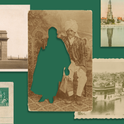Above the lakeside city of Pokhara, Nepal, there stands a small settlement of houses, brightly painted in pastel yellow, brick red and blue. This is Tashiling, one of the oldest camps for Tibetan refugees in the country. Behind Tashiling rises the double summit of Machapuchare, or “Fishtail”, a Himalayan peak that has never been climbed. Beyond Fishtail is the border with China, over which thousands of Tibetans have fled since their homeland was occupied by Chinese forces in 1959.
The first refugees who settled here in 1962 hoped Tashiling would be a temporary shelter. Just over 60 years later, there are shops, a school, a carpet workshop, a Buddhist monastery and a population of 476. Nepal took in more Tibetans than any other country except India; the country was home to 20,000 at the peak of Tibetan immigration.
Yet times are changing for this fragile community. Local industries that employ Tibetans are struggling. Nepal has stopped issuing new refugee cards to Tibetans, blocking anyone born after 1990 from getting a passport, or opening a bank account in the country. Beijing is tightening its grip on Kathmandu, with recent aid packages from China to much poorer Nepal coming with the understanding that the government will increase its surveillance of Tibetans.
In April, I took a taxi from Pokhara to Tashiling camp, and asked residents about their lives there. Most were cautious about talking, but on the condition that I change her name, one woman pulled me up a stool beside her shop.
Lhamo* is part of the generation who has never seen Tibet. “I was born here, in the camp, in 1975,” she told me. “My parents came in 1965.” Lhamo has brought up her two daughters in Tashiling, and earns a living making and selling traditional souvenirs: jewellery, statues, and silver cymbals used in prayer.
The designs are Tibetan, passed down between generations, but Lhamo explained that it is no longer possible to bring the raw materials into Nepal from Chinese-occupied Tibet. “We had to find new routes,” she said. “Peddlers bring us silver and turquoise from Burma and Afghanistan.”
I asked if the changes were connected to the recent crackdown by the Chinese government. Lhamo pressed a finger to her lips. “I can’t say openly. But yes, things have been difficult... with China, and with the rules and regulations of Nepal. Last year we wanted to celebrate Uprising Day [the anniversary of the Tibet rebellion]—we were going to march in Pokhara town and shout: Free Tibet! But we weren’t allowed. We marked the day at the camp instead, with praying and singing.”
“We are in touch with people back home,” she whispered, “But it’s getting harder. They listen to phones.”
Tibetans who can speak more freely have similar stories. As Lobsang Lungtok, a Tibetan community leader now based in Australia, has written: "the Chinese government taps the phone conversations of Tibetans who have family members in exile; the only way for us to stay in contact is by avoiding topics on politics and the Dalai Lama. Phone and internet connections are cut when a protest breaks out.”
Lhamo explained that Tibetan children are taught separately at the camp. Though their parents encourage them to play with Nepali children, the community is guarded and protective. “We want them to be like brothers and sisters…but we hope that they will choose Tibetan husbands and wives. We have to stick together.”
Politics aside, Tibetans and Nepalis coexist peacefully. Tibetan Buddhists are free to practise their religion in Hindu-majority Nepal, where it’s not uncommon to see temples with elements of both Buddhism and Hinduism.
A 10-hour bus ride from Pokhara, in Nepal’s capital, Kathmandu, is Utse, the district’s oldest Tibetan restaurant and hotel. A chalkboard gives the day’s specials: peanut masala; egg-drop soup, tea with yak butter. There are framed portraits of the Dalai Lama, Tibet’s 89-year old religious leader, who is exiled in India. A successor has yet to be chosen; some in the diaspora fear they will lose protection after the Dalai Lama’s death.
Utse is run by three generations of the same family. When I arrived, Rinchen*, the matriarch, was standing in the lobby in slippers and an embroidered dress, checking in a large party of Belgian mountaineers. “Yes, this is my place,” she told me, “I opened it after we lost our country. It was 1971. I was a young woman then, I’m 77 now! I wanted it to be for everyone, not just Tibetans.”
Is it still for everyone? Rinchen glances over her shoulder. “Yes. People come from all countries.” I ask about China, and Rinchen makes the same gesture as Lhamo, a single finger pressed to the lips.
“Yes, yes, we have many visitors from China. Business is business. But we feel all the time that they are watching us.”
China denies that repression is taking place against Tibetans, at home or abroad. “Since Tibet’s peaceful liberation and democratic reform in the 1950s, the southwestern autonomous region has made great strides in preserving and developing Tibetan culture, with the government investing heavily in education and cultural preservation,” reads a recent article on the state-run news site Tibet.cn.
Available data indicates a second wave of emigration of young Tibetans to Australia—overwhelmingly from the generation born after 1990 and no longer eligible for refugee cards in Nepal—though data is scarce. Most Tibetans do not have passports, and others have falsified their ages in order to enter another country. It’s also difficult to pinpoint the diaspora population; the Australian census, for example, asks “which country were you born in?” rather than “with which nationality do you identify” meaning that second and third-generation immigrants can slip through the net.
In 1990, the US began accepting 1,000 Tibetan refugees a year following the introduction of a Diversity Immigrant Visa that prioritised educated migrants from countries that didn’t already have large immigrant communities in America. Language data from the US census shows a steady rise in the Tibetan languages, from 188,000 residents speaking these languages at home in 2000, to over 300,000 in 2020. Australia and Canada also launched their Tibetan quotas in the nineties.
Diana Hewitt, a researcher at Williams College, argues that the decline of the carpet industry—which employed 1.2m Tibetans and Nepalis in Nepal at its peak—drove the descendants of the first settlers overseas. “It used to be [Nepal’s] largest earner of foreign currency, but there just isn’t the demand for these kinds of carpets anymore. The younger generation can’t rely on the income anymore,” she said in a phone call.
The balancing act of Nepali government policy is another factor, with the partial rights granted to Tibetan settlers affecting some generations more than others. “Tibetan children can go to school in Nepal, and be educated to degree level. But any job in Nepal that requires a university education also requires citizenship, which most Tibetans still don’t have. So they have to go abroad, and send money home to their families,” Hewitt added.
While it is also common for young Nepalis to emigrate to find better jobs abroad, Tibetans cannot always follow the same routes. Hundreds of thousands of Nepalis head to Saudi Arabia or the UAE for work every year, but this requires documents which Tibetans don’t have. Thus, they are travelling further, to Australia, the US and Canada, to countries that will accept them. Geopolitical factors are at play here too; as China courts Nepal and India, with visa-free travel and joint military drills, the west is opening doors for those who ran from China—and are still running.
Dee Why near Sydney is home to a community of at least 800 Tibetans. Last year, the demand for Tibetan books was so high that Dee Why library opened a Tibetan section, the first of its kind in Australia. A spokesperson for the mayor of the Northern Beaches council told me the library has loaned out 780 books since launching, and has just started a bi-weekly Tibetan storytime session for children.
Australia’s Gold Coast is as distinct from Himalayas as can be imagined—and the new landscape brings new challenges. Many Tibetans born and raised in landlocked Nepal have never learned to swim, or even seen the ocean. There is a now a swimming club especially for the Dee Why Tibetans.
Western help for the Tibetan émigrés may be part of a wider political strategy, but the communities that have sprung from it are growing year on year. In the foothills of Machapuchare, Lhamo is looking to the future. “Life here in the camp is neither good, nor bad,” she said. “All I hope for is a happier life for my children and grandchildren.”
*Names have been changed













